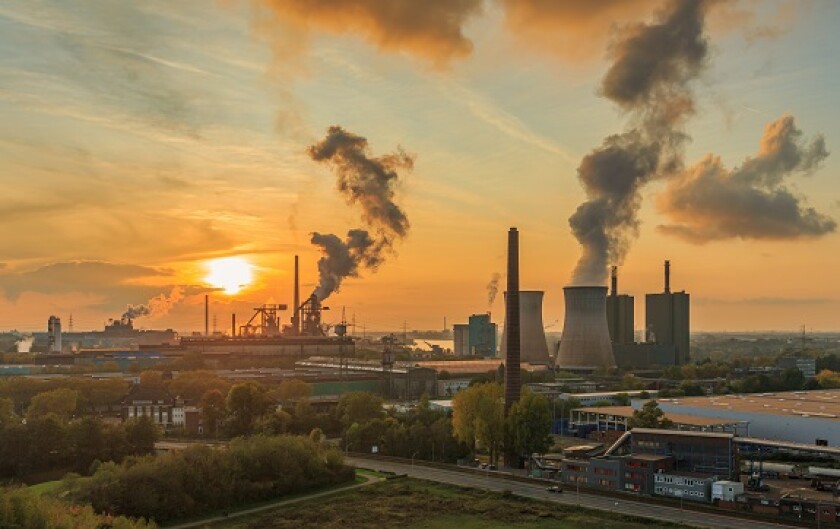China’s GDP grew 7.9% year-on-year in the second quarter, down from 18.3% the previous quarter and narrowly missing consensus forecast of an 8% increase. The two year average GDP growth rose to 5.5% year-on-year, from 5% in the first quarter, according to the National Bureau of Statistics (NBS).
For the first half of 2021, the Chinese economy expanded by 12.7% compared to a year ago, NBS data showed.
*
In dollar terms, China’s exports surged 32.2% year-on-year in June, and imports 36.7%, beating forecasts of a 23% and 29.5% growth, respectively.
The trade surplus widened to $51.53bn last month, from $45.53bn in May, according to the General Administration of Customs. Total trade climbed 27.1% to Rmb18.07tr for the first six months of the year.
*
By the end of June, outstanding property loans in China totalled Rmb50.8tr — 9.5% higher than a year ago, according to the People’s Bank of China (PBoC). The pace of the increase slowed by 2.2 percentage points compared to what was recorded at the end of 2020.
*
China’s banking sector saw a 9.2% annual rise in total onshore assets to Rmb328.8tr by the end of June, with a 9.1% increase in total liabilities to Rmb301tr, data from the China Banking and Insurance Regulatory Commission (CBIRC) showed.
Outstanding non-performing loans (NPLs) stood at Rmb3.5tr, jumping by Rmb108.3bn from the start of the year. The NPL ratio dropped 0.08 percentage points during the six-month period to 1.86%.
By June 30, assets in the insurance industry grew 12.7% year-on-year to Rmb24.8tr.
*
Chinese commercial banks recorded a combined Rmb614.3bn in net profits over the first quarter of 2021, about 2.4% higher than a year earlier, the CBIRC said.
*
The central government published guidelines on the development of the Pudong New Area in Shanghai.
Measures announced by Beijing include easing Qualified Foreign Institutional Investors’ access to Shanghai’s Star market on a trial basis, and to introduce a market-making mechanism on Star.
Shanghai’s bond market infrastructure connectivity will be improved, the document said. A trial programme for simpler registration for offshore debt issuance will also be launched in Pudong.
*
China officially launched its carbon emission trading system on Friday, according to an announcement from the Shanghai Environment Energy Exchange.
Trading began on Friday morning, according to state media Xinhua. More than 2,000 power generators were part of the first batch of companies covered by China’s new carbon market, said Zhao Yingmin, deputy minister of ecology and environment at a Wednesday State Council briefing. Their combined carbon-dioxide emissions of over 4bn tonnes make China’s carbon market the world’s largest for greenhouse gas emissions, Zhao added.
*
A Carbon Market Work Stream (CMWS), co-chaired by the Securities and Futures Commission (SFC) and the Hong Kong Exchanges and Clearing, has been set up, according to a Thursday announcement from the SFC.
The CMWS will “assess the feasibility of developing Hong Kong as a regional carbon trading centre to strengthen collaboration in the Guangdong-Hong Kong-Macao Greater Bay Area”. It will also “actively explore opportunities presented by both the cap-and-trade carbon market and the voluntary carbon market in China and overseas”.
*
The PBoC’s planned evaluation of Chinese banks’ green finance performance will begin in the third quarter, the 21st Century Business Herald reported.
*
Industrial Bank’s Shenzhen branch published its 2020 environmental information disclosure annual report this week, becoming the first among the national banks in China to do so, said onshore media reports.
*
Morgan Stanley has officially renamed its Chinese securities joint venture, Morgan Stanley Huaxin Securities, to Morgan Stanley Securities (China). The US firm recently acquired a 39% stake in the JV from partner China Fortune Securities, taking its total ownership in the onshore entity to 90%.
*
The State Administration for Market Regulation has unconditionally approved Tencent's planned acquisition of Sogou, a top Chinese search engine listed in New York.
Tencent, which owned 39.2% of Sogou by the end of March 2021, will buy a further 60% stake in the company and take it private. The deal, announced at the end of September last year, was valued at $3.5bn.
*
The Shanghai and Shenzhen stock exchanges updated their business guidelines for the issuance of innovative products, adding carbon neutrality bonds and blue bonds under the green bond chapter with specific requirements on the use of proceeds.
Carbon neutrality bond proceeds must be used for projects that contribute to carbon emission reduction, and blue bonds must fund projects aimed at ocean protection and the sustainable use of ocean resources.
The bourses also updated the chapter about ‘poverty alleviation bonds’ to ‘rural revitalisation bonds’.

